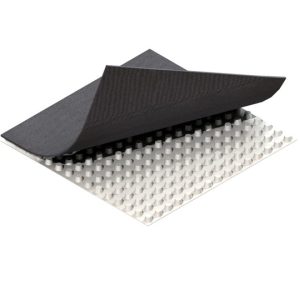
# Geomembrane Applications in Environmental Protection and Civil Engineering
## Introduction to Geomembranes
Geomembranes are synthetic membranes or barriers used to control fluid migration in various engineering projects. These impermeable sheets are typically made from polymers such as high-density polyethylene (HDPE), low-density polyethylene (LDPE), polyvinyl chloride (PVC), and ethylene propylene diene monomer (EPDM). Their versatility and durability make them essential components in both environmental protection and civil engineering applications.
## Environmental Protection Applications
### Landfill Liners and Caps
One of the most critical uses of geomembranes is in landfill construction. They serve as liners to prevent leachate from contaminating groundwater and as caps to minimize the release of landfill gases into the atmosphere. The impermeability of geomembranes ensures that harmful substances are contained, protecting the surrounding environment and public health.
### Wastewater Treatment
Geomembranes are also employed in wastewater treatment facilities. They line lagoons, ponds, and tanks to prevent the seepage of untreated wastewater into the soil and groundwater. This application is crucial for maintaining water quality and preventing environmental contamination.
### Mining Operations
In mining, geomembranes are used to line tailings ponds and heap leach pads. They prevent the leakage of toxic chemicals and heavy metals into the surrounding environment, thereby mitigating the environmental impact of mining activities.
## Civil Engineering Applications
### Water Reservoirs and Canals
Geomembranes are widely used in the construction of water reservoirs and canals. They provide an impermeable barrier that prevents water loss through seepage, ensuring efficient water storage and distribution. This application is particularly important in arid regions where water conservation is critical.
### Tunnels and Underground Structures
In tunnel construction, geomembranes are used as waterproofing layers. They prevent water ingress, which can compromise the structural integrity of tunnels and underground structures. This application enhances the durability and safety of these engineering projects.
### Road and Railway Construction
Geomembranes are also used in road and railway construction to provide separation and stabilization. They prevent the mixing of different soil layers, which can lead to structural failures. Additionally, they help in controlling moisture levels, thereby enhancing the longevity of the infrastructure.
## Advantages of Geomembranes
### Durability
Geomembranes are highly durable and resistant to environmental factors such as UV radiation, chemical exposure, and temperature fluctuations. This makes them suitable for long-term applications in harsh environments.
### Flexibility
The flexibility of geomembranes allows them to conform to irregular surfaces and accommodate ground movements. This property is particularly beneficial in applications involving uneven terrains or seismic activities.
### Cost-Effectiveness
Despite their high performance, geomembranes are cost-effective solutions for fluid containment and environmental protection. Their installation and maintenance costs are relatively low compared to traditional methods, making them an economical choice for various projects.
## Conclusion
Geomembranes play a pivotal role in both environmental protection and civil engineering. Their applications range from landfill liners and wastewater treatment to water reservoirs and tunnel waterproofing. The durability, flexibility, and cost-effectiveness of geomembranes make them indispensable in modern engineering projects. As environmental concerns and infrastructure demands continue to grow, the importance of geomembranes is likely to increase, driving further innovations in their design and application.
Keyword: geomembrana
